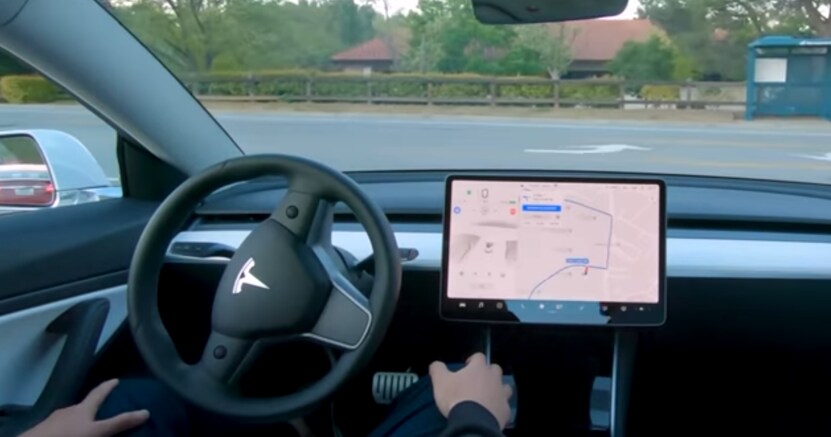A fleet of Tesla-branded robotaxis starting in 2020 and an increase in the level of autonomous driving by the end of this year. Elon Musk unveils his cards for the future on the occasion of Autonomy Day, where he presented the new Full Self-Driving (FSD) and announced the launch of a fleet of robotaxis from 2020. “In one year from today we will have more than one million entirely autonomous cars, ” Musk underlined, lifting the veil on a new microchip on which Tesla is betting for driverless cars, where human intervention is not necessary in an emergency. The announcement was also an opportunity for Musk to reject Lidar radar technology, the one used by rivals in the development of autonomous cars.
Tesla, level 4 autonomous driving
Musk specified that by the end of 2019 all Teslas equipped with the new chips will allow the driver to take their hands off the wheel for the duration of the journeys in driverless mode, thus leaving the control of the car to the new chip. Completely designed by the engineers of the Californian brand, the new hardware was born to replace the Nvidia branded one and is already mounted on all the Model S and Model produced since March and on the Model 3 built since early April. For those who own models built previously, the Full Self Driving package can be enabled by updating the cars with a retrofit at a cost of about $ 5,000 (€ 4,442). Thanks to 12 ultrasonic sensors, eight cameras and a front radar to generate about 2.5 billion pixels every second, processed by the six billion transistors present in the new computing unit, the system will guarantee a Level 4 Sae as regards driving. autonomous, to date already tested on Hyundai and Audi concepts but above all prohibited by the Highway Code. Indeed, for example, Audi A8 and A7 models could travel in mode 3 but the system has been deactivated. It therefore remains to understand the real timing and applications of the announcement made by Musk.
Loading…
Robotaxi from 2020
High news signed by Tesla will concern a fleet of robotaxis, or vehicles without pilots able to transport people in total autonomy. From next year, the Palo Alto company, where the laws allow it, will inaugurate a new self-driving ride hailing service. The fleet will see Tesla models returned by customers at the end of the leases enabled for the new features via over-the-air updates. The application for remote control of cars has also been updated, capable of working to track and reserve a vehicle. The novelty of robotaxis will bring a profit for vehicle owners (as long as they can share their car when it is not used). Tesla has estimated a gross profit of about $ 30,000 (26,654 euros) per year for each car, considering an average life of about 11 years for each car. The figure is calculated with an average mileage of 90,000 miles (144,841 km) every 12 months with 16 hours per day of activity at an average speed of 16 miles per hour (26 km / h) plus eight hours of charging, with half the time with no customers on board.
Reality or science fiction?
Given the many announcements made by Musk, often not respected especially on the temporal front, some doubts have also arisen among investors as confirmed by the shares that fell the day after Investor Day. Starting from the increase in autonomous driving, reach a level 4 within the end of the year is certainly possible in a protected environment but of greater difficulty in a context of chaotic traffic. With the words Autopilot, the Californian brand has sent a message that is sometimes wrong, namely that of making cars capable of driving autonomously. Other doubts come from the robotaxi fleet, certainly interesting from a technological and economic point of view but complex in terms of legislation and insurance. To all this we must add the competitive scenario, with German brands increasingly committed to presenting zero-emission models and Chinese manufacturers ready for the electric challenge.
